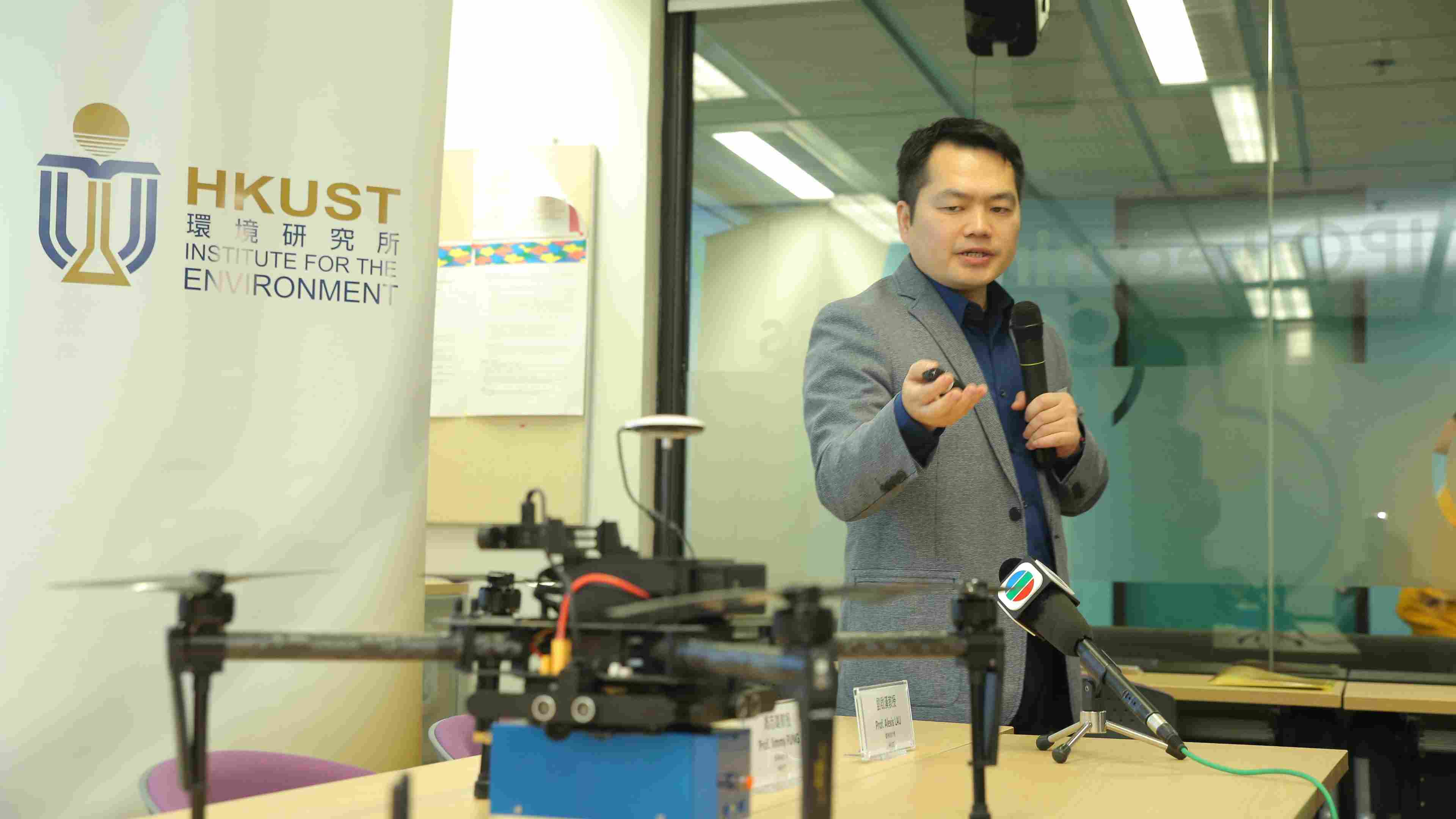
Environment
14:52, 12-Feb-2019
Drones to monitor rising emissions from shipping sector
Updated
21:04, 12-Feb-2019
Alok Gupta

Hong Kong is gearing up to use drones to monitor emissions from ships.
Highly efficient sensors developed after a series of extensive trials have been fitted on the drones. In real time, they accurately measure the pollution content present in the smoke plume released by a ship.
When equipped, the drones, developed by a team of researchers from the Hong Kong University of Science and Technology (HKUST), scan emissions by hovering over ships for just two minutes.
The unmanned machines will replace the cumbersome process of manually collecting fuel from the ship's tank, and then sending it for a laboratory test.
The navigation sector, a major contributor to a city's air pollution, releases more than 40 percent of atmospheric pollutants including sulfur dioxide, nitrogen oxide and extremely fine particles.
In a bid to curb rising air pollution from marine vessels, Hong Kong passed a regulation mandating ships to use clean fuel. The regulation came into effect last month.
The new law makes it mandatory for ocean-going vessels (OGV) using heavy fuel oil with an average sulfur content of 2.6 percent to switch over to cleaner fuel with sulfur content less than 0.5 percent, before entering Hong Kong waters.
Shipping sector's pollution footprint increasing
Shipping emissions have become a global concern with marine transport that carries about 90 percent of trade, emitting nearly three percent of total greenhouse gases every year.

The HKUST team has fitted sensors on a drone to measure emissions from ships and vessels in Hong Kong. /Photo courtesy HKUST
The HKUST team has fitted sensors on a drone to measure emissions from ships and vessels in Hong Kong. /Photo courtesy HKUST
Increasing vessel fleet size and lack of efficient technology make emission monitoring a significant challenge.
Last year, more than 173 countries, members of the United Nations International Maritime Organization (IMO), pledged to slash shipping emissions by 50 percent.
“Despite global and national regulations in place or in works to control air pollution caused by the navigation sector, challenges remain to monitor emissions from ships,” Zhi Ning, a lead researcher on the project at HKUST, told CGTN.
Developed countries use helicopters, scan photographs of smoke plume released by ships, or physically collect fuel samples to ascertain if ships are running on clean fuel.
Potentially, drones can be cost-effective, less time consuming, and scientifically much more advanced to precisely monitor the emissions from the ships. "We can make the sensors more accurate and further innovate it", Ning added.
At present, most of the compliance for clean fuel use in the sector is voluntary, making it susceptible to manipulation. A study conducted in 2017 found that three of the six most polluted harbors are based in Asian countries – Singapore, Hong Kong and Shanghai.
Researchers also found more than 76,000 vessels plying on international waters without providing crucial information including the type of fuel use, size, and route. In such a scenario, drones can act as mobile monitoring stations to curb potential pollution in cases like these, researchers said.
In order to ensure the feasibility of the drones to monitor shipping emissions, extensive trials will be held over the next few months.
Once cleared for induction, Hong Kong will have to make a few legislative changes to allow their use.
(Top Image: Professor Zhi Ning from HKUST explains how drones can be used to monitor clean fuel use by the shipping sector. /Photo courtesy HKUST)

SITEMAP
Copyright © 2018 CGTN. Beijing ICP prepared NO.16065310-3
Copyright © 2018 CGTN. Beijing ICP prepared NO.16065310-3